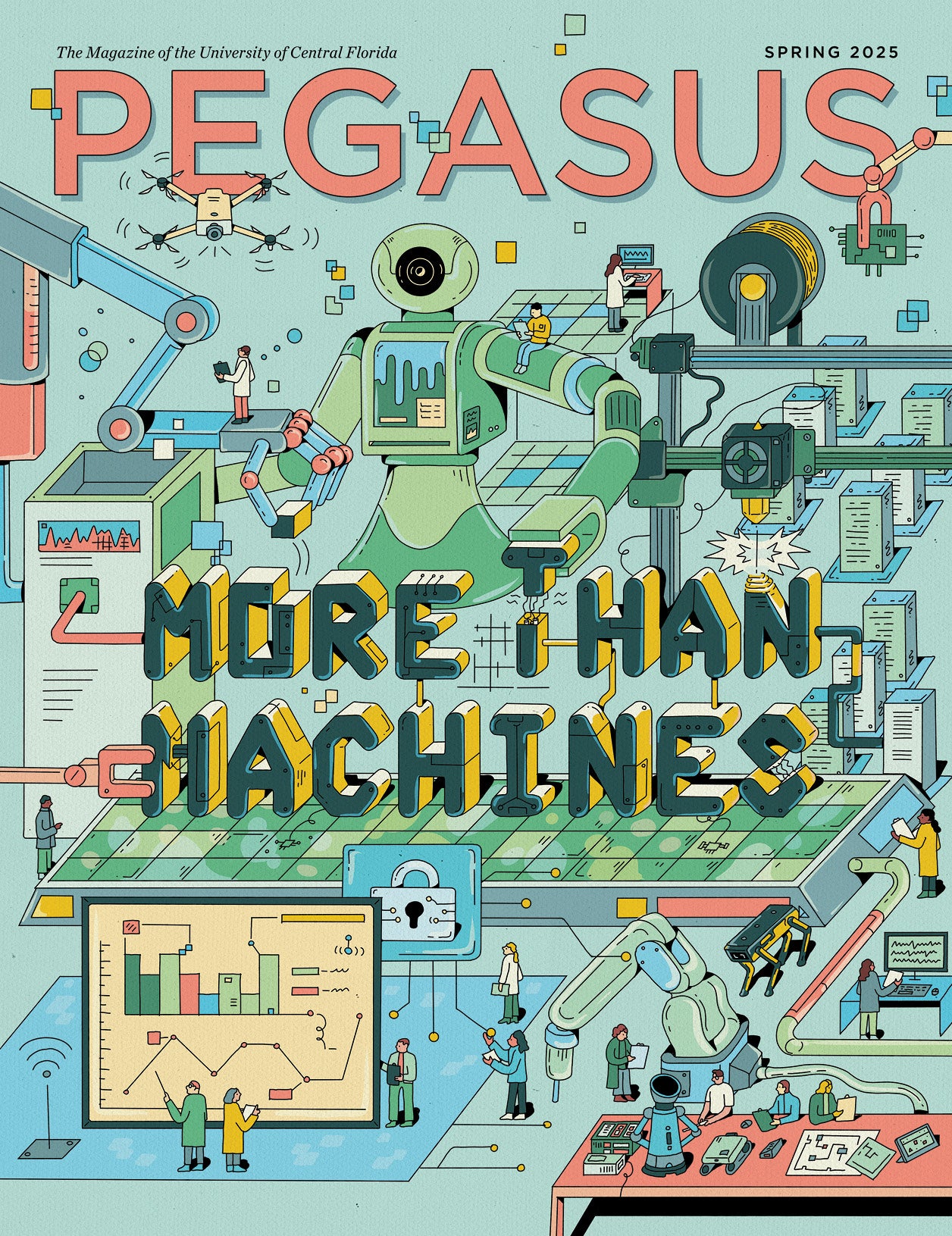In his final national forecast of the year, Sean Snaith pulls out his favorite playlist to predict what’s next for the U.S. economy. Top hits (and an accompanying Spotify playlist) include a recession that’s “slipping, slipping, slipping into the future” and Beastie Boys-like “slow and low” growth next year.
What’s more, Snaith, director of UCF’s Institute for Economic Forecasting, says that fears of a recession happening are consistent with past economic downturns. In his latest forecast released today, he references the more than 40% of economists surveyed by the Federal Reserve Bank of Philadelphia who predict a decline in real GDP during the first quarter of 2024.
“Two-plus years of falling real income have consumers walking a financial tightrope, and the safety net of a still-tight labor market may be the only thing between a slip-up and a plunge into a recession,” Snaith says. “The anxiety of watching this high-wire act will be a persistent companion over the next year.”
The U.S. economy is entering a period of slower growth that could last for two years, Snaith says, citing the unintended consequence of an over-reliance on pandemic-era fiscal stimulus and extremely loose monetary policy.
“Multi-trillion-dollar deficits fueled a spending frenzy in an environment of very low interest rates that continued for nearly three years,” Snaith adds. “That spending was the spark that ignited inflation and ultimately sowed the seeds of the impending slowdown.”
Listen to Snaith’s full forecast playlist here.
See other highlights from his four-year quarterly U.S. forecast below:
- While the labor market has shown little signs of a coming recession, the impending slowdown will not be as innocuous. Unemployment will rise as 2024 progresses, continuing into 2025. Job growth will turn negative, but not as sharply as during the 2008-09 and 2020 recessions.
- A softening of real GDP growth will slow to 1.2% in 2024 and further decline to 1% in 2025, before rising to 1.9% in 2027. As the Beastie Boys would say, “Slow and low, that is the tempo,” for the next couple of years at least.
- U.S. consumers have been hit hard by high inflation for two years, and even though wage and salary growth are the strongest they’ve been in years, the cost of living has eroded all those wage gains and then some. Even though workers have more dollars in their paychecks, the amount of goods and services they’ve been able to purchase has been declining. This declining purchasing power has helped set the stage for a slowing economy.
- After reaching nearly 1.6 million in 2021, housing starts will fall to 1.39 million in 2023, before leveling out for several years and hitting a level slightly below 1.28 million in 2027. Higher mortgage rates and high home prices are headwinds — as is the economic slowdown — and all three will continue to shape the residential sector for the next two years. The ongoing shortage of housing that is plaguing the sector in many parts of the country will provide support preventing starts from falling in a more dramatic fashion.
- Deficits through 2027 will consistently average nearly $1.8 trillion. The amount that the projected deficits will add to the national debt over the next four years will be more than $7.1 trillion, pushing the total national debt to more than $40.8 trillion and a debt-to-GDP ratio of 130%. With higher interest rates in the economy, the burden of servicing this debt will rise as well.
Snaith is a nationally recognized economist in the field of economics, forecasting, analysis and market sizing. He has been recognized by Bloomberg News as one of the country’s most accurate economic forecasters and has served as a consultant for both local governments and multi-national corporations. Before joining UCF’s College of Business, Snaith held faculty positions at Pennsylvania State University, American University in Cairo, the University of North Dakota and the University of the Pacific. More of Snaith’s work is available on the Institute for Economic Forecasting site.




